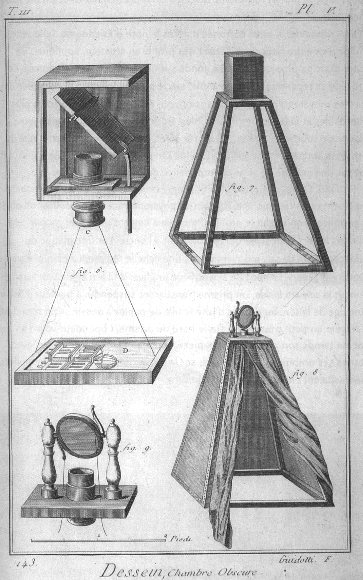The tangible inception of photography dates back to the 19th century, and this is one technology that has without a doubt revolutionizedthe way we see and experience the world. The earliest photographers used their cameras to document the horrors of war, capture special moments in history and create stunning portraits of Hollywood movie stars, politicians and other prominent individuals. Photography is now everywhere, ingrained into everyday life. The services of professional phototographers like DFW Photographers are sought after for all kinds of events. Though time and incredible innovation has changed our tools dramatically over the years – from the Camera Obscura to the 4K technology of today – that undeniable sense of preserving precious moments and people in time, as well as the inexplicable connection of a photographer to their camera and the world around them – all remain prevailing truths about this art form that we are so fond of here at Henry’s.
But how did we get here, to this exciting era of aerial photography and Friday night selfies? Travel back with us to around the year 330 BC. It was at this time a famous Greek philosopher and scientist (you may know him as a certain Aristotle) had made a very keen observation: He wondered how it could be possible for the sun to create a circular image when shining through a hole that was square. This ‘simple’ contemplation inspired theorists to expand on the principles, and Voil – Fast-forward to 1827. French inventor Joseph Nicphore Nipce used the pinhole camera (aka Camera Obscura) to create what we know as the first photographic image in history.
Camera obscura in Encyclopdie, ou dictionnaire raisonn des sciences, des arts et des mtiers, Denis Diderot and Jean le Rond d’Alembert , 1751
In partnership with French inventor Louis Daguerre, the two worked to improve the process, eventually leading to the birth of modern photography through what was known as the daguerreotype. The age of film photography was born, and over the next century men and women everywhere began using their beloved cameras to capture the special moments in their own lives.
How Digital Photography Has Changed the Game
The next phase of the photographic revolution took place late in the 20th century, when the first digital cameras changed the way pictures were taken and photographers (such as wedding photographer Temecula) interacted with the world around them. The shift from film to digital changed the face of photography in many different ways, but perhaps the most important was the cost of the technology.
While the first digital cameras were pricey by today’s standards, they also freed their owners from the need to buy and develop film. Suddenly photographers could take dozens, or even hundreds, of shots without worrying about the cost of the film or the difficulty of developing the prints.
The instant nature of digital photography was another revolutionary development. Instead of waiting days or weeks to see how their shots came out, shutterbugs could see each picture seconds after it was taken. That instant feedback allowed budding photographers to hone their skills and experiment with light and shadow.
It also allowed parents to take endless shots of their kids and pick their favorites later.

While digital photography has its advantages, purists know that nothing can replace film. Traditional film photography still has its place, even in the digital world. Compared to digital shots, film provides a much richer look and feel. The larger image size translates to richer colors and more vibrant backgrounds, something even the best digital shots cannot provide.
If you doubt the superiority of traditional film photography, just head to your local art museum and look closely at the works on display there. Compare the colors, shadows and textures of those prints to your favorite digital shots and you will see why film photography is not going away anytime soon.
The Rise of Selfie Culture
If you have spent any time online, you have probably experienced the rise of selfie culture firsthand. To the uninitiated, those endless self-portraits can seem immature and narcissistic, but there is something deeper lurking below the surface. The selfie is the perfect example of self-expression and the ultimate example of how the Internet has influenced the world of photography.

Capturing and Preserving the Special Moments of Life
If there is one thing the rise of digital photography has done, it is allowing parents to capture the special moments in the lives of their children. From that first smartphone photo of mom and baby at the hospital to seminal moments like first steps, the first day at school and the first goal on the soccer field, all the special moments in life can be captured in an instant and saved forever in the cloud.
A library of images that once would have required hundreds of rolls of film (and thousands of dollars) to amass is now available instantly (and freely) at the push of a button. The revolution in digital photography has allowed parents to document the lives of their children like never before, and that is good news for future generations.
If you have ever researched your family tree, you have probably been frustrated by the dearth of photographs of distant relatives. Future generations should have no such problem. The ease and availability of cloud storage technology and the sheer number of photographs stored there should make it easy for our children and grandchildren to document our lives and recreate the timelines of the 21st century.
Dashcams – Changing the Way We Drive
The cameras in our phones are changing the way we interact, but the cameras in our cars may have an even greater impact. Dashcams have been falling in price even as the technology gets better, and that puts these devices within reach of the average driver.
A dash-mounted camera can be a vital tool in the event of an accident, serving as an impartial witness and silently recording the position of every vehicle involved. Dashcams mounted in police cars are changing the way we look at crime and law enforcement behavior, while dashcams mounted in private cars are keeping tabs on teenage drivers, giving their parents peace of mind and holding those new drivers accountable for their actions. If you are involved in an accident on the road, you may want to contact lawyers like those of lamber goodnow to help you with settling the legal aspect of the incident in its aftermath.
The 19th century ushered in the age of photography, but it is already clear that the 21st century is the age of the drone. Drone technology is changing everything – from the way wars are fought to the way packages are delivered.
The DJI Phantom 3 Professional Drone is now available to Pre-Orders! Click here for more info!
Drones are changing the face of science, allowing scientists and laypeople alike to watch glaciers fall, see inside active volcanoes and even view the earth itself thanks to drone photography. Personal drones allow homeowners to see and photograph their properties with pinpoint precision and brides to document every minute of the big day. Businesses are finding new and innovative ways to use this new technology to give them a competitive advantage in their industry, from wedding photography to real estate.
The world of photography continues to grow and evolve, and we are beyond excited to see what the future has in store. From the invention of the first camera in the 19th century to the rise of drones and dashcams in the 21st , photography has changed dramatically through the years. The change in technology and the ease of accessibility that has enabled more and more people to capture their visions hasalso translated into new voices being heard, more (in)justices being recorded for posterity, more adventures in places we as humans have never had the ability to see, and yes – of course, more selfies.
What direction do you think photography will go in next? Answer in the comments below or join the conversation by visiting us on:
Facebook | Twitter | Instagram | Google+
Click here to see what is believed to be the first photograph of a human ever taken!
Click here to see more about the history of Henry’s in our 100 years feature site!










